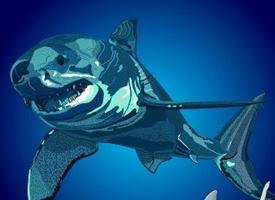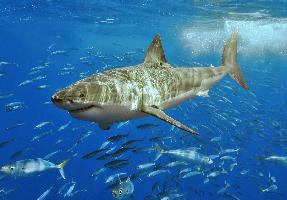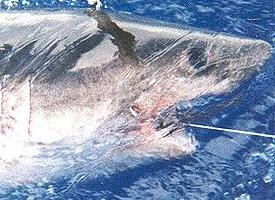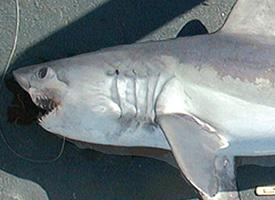
Description de l'animal
The Porbeagle, Lamna nasus, is a species of mackerel shark found in the cold and temperate marine waters of the North Atlantic and Southern Hemisphere. This intriguing species is known for its robust and spindle-shaped body, capable of reaching lengths up to 3.5 meters (11.5 feet) and weights of approximately 230 kilograms (507 pounds), though most specimens are smaller.The Porbeagle is distinguished by its dark blue or gray back and white underbelly, creating a sharp contrast that is typical among many oceanic predators. This coloration provides camouflage from both prey and predators; from below, its white belly blends with the sunlight filtering down through the water, while from above, its darker back merges with the deep ocean waters.
One of the most notable features of the Porbeagle is its conical snout and large eyes, adaptations that suggest its proficiency as a predator. Its mouth is equipped with sharp, triangular teeth that are serrated on the edges, ideal for seizing and holding onto slippery fish, which constitute the bulk of its diet. The Porbeagle is known to be a powerful swimmer, thanks to its large, crescent-shaped caudal (tail) fin and its pectoral fins that provide stability and maneuverability.
This shark is endothermic, a rare trait among fish, allowing it to maintain a body temperature higher than the surrounding water. This adaptation enables the Porbeagle to inhabit cooler waters and to sustain a high level of activity, which is crucial for hunting and for covering long distances in search of food or during migration.
Porbeagles are solitary animals but can be found in small groups, especially during the breeding season. Unlike many sharks, Porbeagles are ovoviviparous, meaning their eggs develop and hatch inside the female's body, with the young being born fully formed. This reproductive strategy, combined with a slow growth rate and late maturity, makes the Porbeagle vulnerable to overfishing.
In terms of behavior, Porbeagles are known to be curious and are sometimes seen investigating boats and divers, exhibiting a level of intelligence and awareness that is fascinating to scientists and marine enthusiasts alike. They have also been observed engaging in playful behavior, such as chasing their own tails, a trait that adds a layer of complexity to their character.
Unfortunately, the Porbeagle is listed as Vulnerable by the International Union for Conservation of Nature (IUCN) due to overfishing for its meat, fins, and liver oil. They are caught in targeted fisheries as well as bycatch in gear set for other species. Conservation efforts are underway to ensure sustainable management of Porbeagle populations, including catch limits and protections in certain areas, but challenges remain in enforcing these measures across international waters.
In conclusion, the Porbeagle, Lamna nasus, is a fascinating and powerful marine predator, whose biology and behavior reflect adaptations to a life in the cold, open oceans of the world. Despite its prowess, it faces significant threats from human activities, highlighting the need for continued research and conservation efforts to ensure its survival in the world's oceans.
Carte de répartition
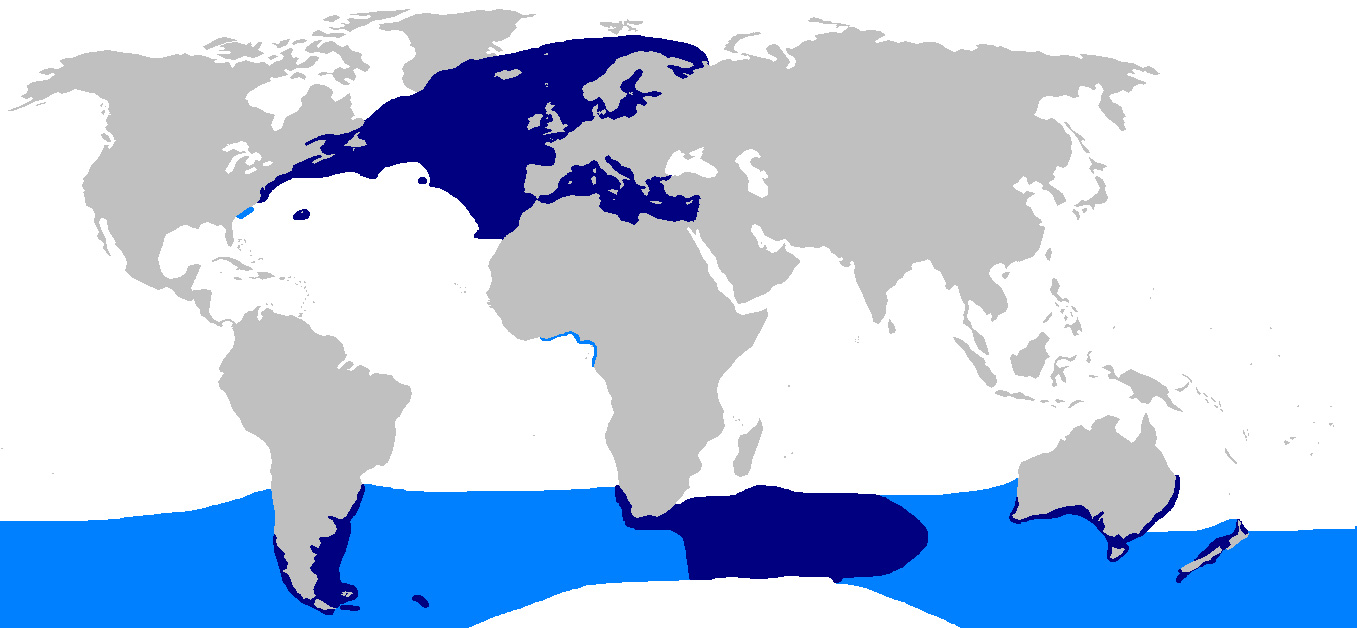
Animaux similaires
Nouvelles photos d'animaux
Top 10 des animaux
- Dolphin gull (Leucophaeus scoresbii)
- Diana monkey (Cercopithecus diana)
- Moustached guenon (Cercopithecus cephus)
- Galápagos tortoise (Geochelone nigra complex)
- Russian tortoise (Testudo horsfieldii)
- Japanese macaque (Macaca fuscata)
- Stone loach (Barbatula barbatula)
- Greek tortoise (Testudo graeca)
- Common flying dragon (Draco volans)
- Colossal squid (Mesonychoteuthis hamiltoni)
